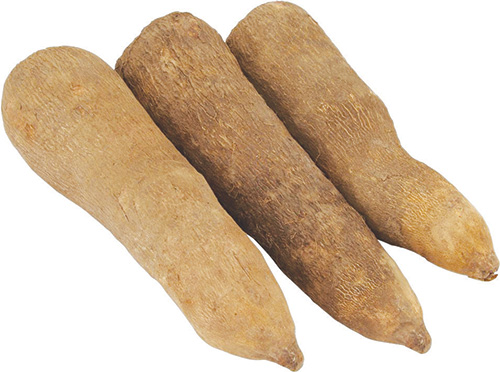Yam is the common name for some plant species in the genus Dioscorea (family Dioscoreaceae) that form edible tubers.
These are perennial herbaceous vines cultivated for the consumption of their starchy tubers in Africa, Asia, Latin America, the Caribbean and Oceania. There are many cultivars of yam. Although some varieties of sweet potato (Ipomoea batatas) are also called yam in parts of the United States and Canada, sweet potato is not part of the Dioscoreaceae family, but belongs in the unrelated morning glory family, Convolvulaceae.
August is the season of new yam. The month the tuber is supposed to be harvested, having been planted around March when the rains start.
“I just cannot wait any longer to start eating new yam. Although some of my neighbours are already eating it, I dare not try it until this ceremony takes place,” revealed Ben Aiyedun, an Ikorodu-based banker from Ondo State.
Although an elite, Aiyedun is one of the many people who believe in the New Yam festival which usually holds around August to herald the arrival of new yam.
“It is our own way of thanking God for new yam and we drop some on the ground before eating it,” he said.
For instance, the people of Mbaise in Imo State celebrate their New Yam Festival every August 15, in the popular Iri Ji Mbaise. Its sons and daughters from far and near always travel home to ‘eat the new yam’ with their kith and kin. During the festival, notable yam farmers, known as Eze Ji (king of yam), flaunt their craft.
It is noteworthy that Igboland claims ownership of the crop, hence the Igbo see yam as a king crop. In those days in Igboland, real men are known by the size of their barns, which is mainly of yam.
Though the Igbo say mba ji na akari ihu n’oku (some slices of yam are too big to be roasted), at the new yam festival in Igboland, a big tuber of yam is roasted whole.
This celebration depicts the importance of yam in the society, as no other food item gets any special recognition before eating. Another plus for yam is that it is available all year round, but old yam becomes very expensive few months before the harvesting of new yam.
Now that the formalities have been dealt with, very few people can wait to start savouring this staple food that can be eaten in various forms.
According to nutritionists, a tuber of yam contains carbohydrate, sugar, dietary fibre, fats, as well as vitamins C, E and K. It also contains trace elements such as calcium, iron, magnesium, manganese, phosphorus, potassium and zinc.
Species
Depending on the area, there are different types of yam; but the popular ones in Nigeria are white, yellow, purple, water and bitter yams.
The white and yellow yams are very common with brown smooth or ‘hairy’ tuber skin. The difference in these two is the colour of the firm flesh.
“Although they both look alike, the yellow flesh of yellow yam can be attributed to the presence of carotenoids in it,” explained Funmi Sanyaolu, an agriculturist.
Purple yam derives its name from the purple colour on the outer layer of the flesh when the rough skin is peeled off. Many people finely peel off the purple layer before cooking.
Water yam is also popular, especially with Ijebu-speaking people. The tuber can be in various shapes, but the flesh is usually white and watery in texture.
Bitter yam (known as ehuru by Ikale people of Ondo) may not be very common; but traditional healers like Tosin Awe are very familiar with them.
“Ehuru is usually eaten as vegetable, but the wild ones are very poisonous and we don’t allow them into our premises because it is a charm neutraliser,” Awe said.
Preparation
For many people, excessive contact with uncooked yam fluids can make their skin itch which can be eased with the application of red palm oil to the affected part of the body.
The most common cooking methods of yam are boiling, frying and roasting; but this still depends on the type of yam. They can all be boiled, but not all can be fried or roasted as it were. The derivatives of these processes make yam very important.
Yam can be boiled, seasoned with salt and eaten with palm oil, sauces or fried eggs. But Mabel Idiagbonya, a nutritionist, advised that the older the yam, the smaller the chunks should be, and the more water it will need to boil.
White and yellow yams are the most versatile, as they can be eaten in more ways than the other yams. But they are best known for making pounded yam which can be enjoyed with any soup.
Fried yam and pepper sauce is very popular on many streets, while many kitchens are already trying out yam balls just like meat balls.
Water yam is especially good for preparing iko kore and ojojo (a delicacy with Ijebu speaking people) and ekpang nkukwo.
Also, yam pieces can be dried out and milled to a powdery form known as elubo before preparing it to make amala which can be eaten with local soups.
However, Idiagbonya warned that due to its low protein content, yam diets should be supplemented with more protein-rich foods.












